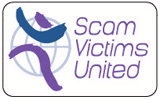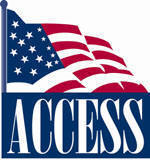A computer error at student lender Sallie Mae resulted in about a million of its customers being erroneously reported for several days as delinquent on their loans, causing their credit scores to plunge before the problem was corrected, the company said Wednesday.
Reston, Va.-based Sallie Mae, the country's largest student lender, mistakenly reported some types of payment plans as arrangements for partial payment, causing credit reporting firm Equifax to falsely code the borrowers' accounts as delinquent.
The situation was reported Wednesday by Bankrate.com, a financial information service.
Some borrowers' credit scores dropped 100 points or more as a result of the error, Bankrate.com said. MORE
**************************************************************
Student loan turmoil stresses families
Lenders drop out of federal college loan program, but money is still available.
Congress wants to ensure financing doesn't shut down over long term.
NEW YORK (CNNMoney.com) -- Paying for college is rarely easy, but this year parents and students could have a tougher time securing the necessary financing.
Lenders are dropping out of the federal student loan program because of the continuing credit crunch on Wall Street. Congress has entered the fray as fears mount that conditions will worsen this summer when a flood of students apply for funding.
"The ongoing turmoil in U.S. credit markets ... could leave millions of students in a last-minute dash to secure the financial assistance they need to attend college this academic year," Sen. Christopher Dodd, D.-Conn, head of the Senate Banking Committee, said at a hearing Tuesday.
More than 55 lenders who originate 13% of college loans have stopped making loans in recent months. Financial firms say they are leaving the program because subsidy cuts enacted by Congress last year, combined with the credit crunch that has made it costlier for them to sell the loans to investors, have slashed the market's profitability.
The departures come at a time when lenders are also tightening their standards for private student loans, a smaller but growing segment of the industry.
This doesn't mean funding has dried up, however. The U.S. Department of Education has surveyed schools that could be affected by the exodus and all have found alternative options for their students. There are more than 2,000 lenders in the program, though the 10 largest provide the vast majority of funding.
MORE
****************************************************************
How to shop for student loans
The credit crunch has squeezed the education market, so you have to start looking for the best deal now.
(Fortune) --As college acceptance letters arrive this month, families will be celebrating the good news (we hope!), then bracing for the grueling process of figuring out how to pay for four years' tuition.
There is relief for some. While costs continue to soar, a dozen colleges, from Amherst to Williams, have eliminated student loans from financial-aid packages - replacing them with outright grants - and others are waiving tuition for low-income families. Harvard recently said it's capping family contributions at 10% of annual income for parents earning up to $180,000 a year.
It's a promising trend, but many families will still need to borrow. Meanwhile, the student-lending market has taken two dramatic blows in the past year. First, amid the subprime mortgage crisis, funding for all kinds of loans has dried up. At the same time the College Cost Reduction and Access Act of 2007 cut government subsidies to issuers of federal student loans, further squeezing the market.
As a result several major education lenders - including a few state agencies -have stopped making loans. "It was the perfect storm," says Mark Kantrowitz, publisher of FinAid.org. "These are challenging times to be an education lender."
What does that mean for borrowers? A few simple rules can help families navigate this tougher market.
Read more and learn about your best options and what to avoid here: CNN Money.com

 NEWSLETTER SIGN UP
NEWSLETTER SIGN UP SUBSCRIBE
SUBSCRIBE CONTACT
CONTACT

















Leave a comment